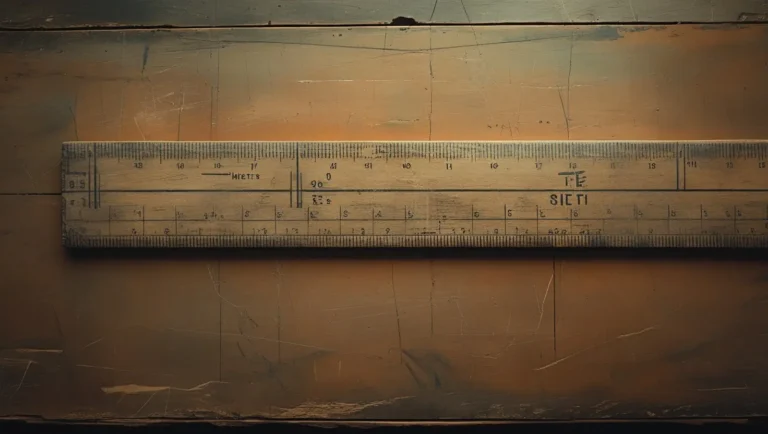Introduction: Understanding the Meters to Feet Conversion
When dealing with measurements, you might come across various situations that require converting between the metric and Imperial systems. For example, you may need to know 1.96 meters to feet, or how to convert 1.76 meters to feet. Since meters are part of the metric system, used in most countries, and feet are used in the Imperial system (like in the United States and the UK), understanding how to make these conversions is essential.
Whether you’re in construction, travel, fitness, or any field that requires precise measurements, knowing how to convert meters into feet (and vice versa) will ensure accuracy.
How to Convert 1.96 Meters to Feet
To convert 1.96 meters to feet, we use the simple conversion factor:
1 meter = 3.28084 feet.
So, to convert 1.96 meters to feet, multiply 1.96 by 3.28084:
1.96 meters × 3.28084 = 6.429 feet.
Thus, 1.96 meters equals 6.429 feet.
What Does 1.76 Meters to Feet Equal?
Converting 1.76 meters to feet is easy with the same method. Multiply 1.76 by 3.28084:
1.76 meters × 3.28084 = 5.7745 feet.
Therefore, 1.76 meters equals 5.77 feet.
Converting 1.67 Metres in Feet
Now, let’s convert 1.67 metres in feet using the same conversion factor.
1.67 meters × 3.28084 = 5.469 feet.
Thus, 1.67 meters equals 5.47 feet.
How Many Feet Is 1.79 Metres?
To convert 1.79 metres in feet, multiply 1.79 by 3.28084:
1.79 meters × 3.28084 = 5.869 feet.
Therefore, 1.79 meters equals 5.87 feet.
Converting 1.81 M into Feet
Finally, let’s convert 1.81 m into feet.
1.81 meters × 3.28084 = 5.943 feet.
So, 1.81 meters equals 5.94 feet.
Meters to Feet Conversion Table
Here’s a reference table for the conversions of 1.96 meters to feet, 1.76 meters to feet, 1.67 metres in feet, 1.79 metres in feet, and 1.81 m into feet:
| Meters (m) | Feet (ft) |
|---|---|
| 1.96 | 6.429 |
| 1.76 | 5.77 |
| 1.67 | 5.47 |
| 1.79 | 5.87 |
| 1.81 | 5.94 |
Why Is It Important to Know Meters to Feet Conversions?
Understanding how to convert 1.96 meters to feet, 1.76 meters to feet, and similar conversions is useful in many contexts. Whether you are:
- Traveling: Knowing the distance in meters or feet can help you understand the sizes of spaces like hotel rooms, landmarks, or stadiums.
- Fitness and Health: Many sports and fitness routines use both systems, so converting between meters and feet can help you measure progress.
- Construction and Engineering: Builders and engineers often need to switch between metric and imperial measurements for various construction projects.
Knowing how to convert 1.96 meters to feet and similar conversions is crucial for international work, travel, and understanding sizes.
Common Uses of Meters and Feet
Meters are commonly used in countries that follow the metric system, and feet are used primarily in countries like the United States and the UK. Here are some of the most common uses for both:
- Meters: Used for measuring distances in athletics, running tracks, or tall structures like skyscrapers.
- Feet: Common in construction for building measurements, body height, and determining room sizes in homes.
When switching between these units, conversions like 1.96 meters to feet and others are often needed.
Real-Life Applications of Meters to Feet Conversion
Here are some practical scenarios where converting 1.96 meters to feet and similar conversions are essential:
- Fitness:
In fitness, body height is often measured in feet and inches in places like the United States and the UK, but in countries using the metric system, it’s measured in meters. For example, if someone is 1.96 meters tall, they would be approximately 6.43 feet tall. This is important when tracking fitness progress, comparing heights in competitions, or determining appropriate equipment sizes. - Travel:
When traveling internationally, travelers often encounter distance markers in different units. For example, a hotel room’s ceiling height in Europe might be listed in meters (e.g., 1.81 meters), but in the US, it would typically be in feet. Knowing the conversion helps travelers understand the space they’ll be working with, whether it’s the height of a room or the length of a vehicle or hallway. - Construction and Engineering:
In construction projects, especially those involving international collaboration, it’s common to work with both metric and imperial measurements. An engineer in the UK might need to convert 1.76 meters to feet to understand the measurements given by a US contractor. This is critical for accurate planning and measurement across different systems. - Sports:
Track and field events, particularly those held internationally, will measure distances in meters (such as the length of a race), but when viewing the results in the US, feet are often used. Converting 1.79 meters in feet (about 5.87 feet) might be necessary when calculating distances for jumps or other events.
Frequently Asked Questions (FAQ)
Q1: How do I convert meters to feet manually?
A1: To convert meters to feet, multiply the number of meters by 3.28084. For example, 1.96 meters × 3.28084 = 6.429 feet.
Q2: What is the conversion formula for 1.96 meters to feet?
A2: The conversion formula is:
Meters × 3.28084 = Feet.
Q3: How can I easily convert other measurements like 1.76 meters to feet?
A3: Use the same formula:
Meters × 3.28084 = Feet.
For example, 1.76 meters × 3.28084 = 5.77 feet.
Read More : 59cm to Inches
Conclusion
Understanding how to convert 1.96 meters to feet, 1.76 meters to feet, 1.67 metres in feet, 1.79 metres in feet, and 1.81 m into feet is essential for anyone working with measurements in both systems. With the simple formula and conversion factor of 1 meter = 3.28084 feet, you can quickly convert between these units for any purpose.
Whether you’re measuring distance, height, or space, these conversions ensure you can make accurate calculations in any field.


1 Comment
Pingback: 1.9km in Miles: Quick Conversion Guide